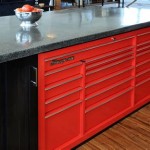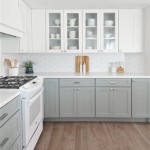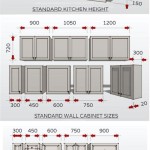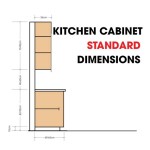Can You Use MDF for Kitchen Cabinet Doors?
Medium-density fiberboard (MDF) is a versatile and popular material used in various applications, including furniture construction, cabinetry, and more. Its smooth, dense surface makes it an attractive option for kitchen cabinet doors, but some concerns arise regarding its suitability. This article will explore the pros and cons of using MDF for kitchen cabinet doors, analyzing its properties and providing insights to help you make an informed decision for your kitchen renovation.
Pros of Using MDF for Kitchen Cabinet Doors
MDF offers several advantages that make it a compelling choice for kitchen cabinet doors:
- Smooth Surface: MDF's smooth, consistent surface makes it ideal for painting or laminating. This ensures a flawless finish for your cabinets, regardless of the desired aesthetic.
- Durability: When properly constructed and finished, MDF can be quite durable. It resists scratches, dents, and impact damage, making it a good option for high-traffic areas like kitchens.
- Cost-Effectiveness: MDF is generally less expensive than other materials like solid wood, making it an attractive choice for budget-conscious homeowners.
- Moisture Resistance: While not as resistant to moisture as some other materials, MDF can be treated with moisture-resistant coatings and sealants to enhance its performance in humid environments.
Cons of Using MDF for Kitchen Cabinet Doors
While MDF offers numerous benefits, it also has some drawbacks that you should consider:
- Water Sensitivity: MDF is susceptible to water damage, making it less suitable for applications where it might be exposed to prolonged moisture. This is a particular concern for kitchen cabinets, as they may encounter splashes and spills. Proper sealing and protective coatings are essential to mitigate water damage.
- Edge Chipping: MDF can be prone to chipping on the edges, making it crucial to consider the construction methods and finishing details carefully. Using edge banding or other reinforcing techniques can minimize chipping and enhance durability.
- Weight: MDF is heavier than some other materials used for cabinet doors, such as plywood. This can impact the door's movement and require stronger hinges or additional support.
Alternatives to MDF for Kitchen Cabinet Doors
If you're concerned about the limitations of MDF, several alternatives are available for your kitchen cabinet doors:
- Solid Wood: Offers a luxurious, classic look and superior durability. It's also more water-resistant than MDF, but it is typically more expensive.
- Plywood: A strong, stable option that is less expensive than solid wood but still offers excellent durability and moisture resistance.
- Thermofoil: A plastic laminate applied to a core material, such as MDF. This option provides a smooth, durable surface with various color and texture options and is resistant to moisture and scratches.
Making the Right Choice
The best material for your kitchen cabinet doors depends on your budget, aesthetic preferences, and the level of moisture resistance required. If you're on a tight budget and want a smooth, paintable surface, MDF can be a suitable option. However, if moisture resistance is a major concern or you prefer a more luxurious look, consider solid wood or plywood. Ultimately, carefully weigh the pros and cons of each material and choose the one that best fits your needs and budget.

Mdf Vs Solid Wood Cabinet Doors Nieu

Can You Paint Mdf Cabinets Pa Kitchen

Why Mdf Has Become So Popular For Cabinet Doors Blog 180 Kitchens

Mdf Vs Solid Wood Cabinet Doors Nieu

Why Is Mdf Used In Cabinet Doors

Solid Wood Kitchen Doors Vs Mdf Replacement Blog

Making Mdf Cabinet Doors Woodworking

How To Make Mdf Cabinet Doors

Painting Mdf Doors Expert Tips For A Professional Finish Tkdc

Mdf Vs Natural Wood A Comparison Of Kitchen Cabinet Materials
Related Posts








